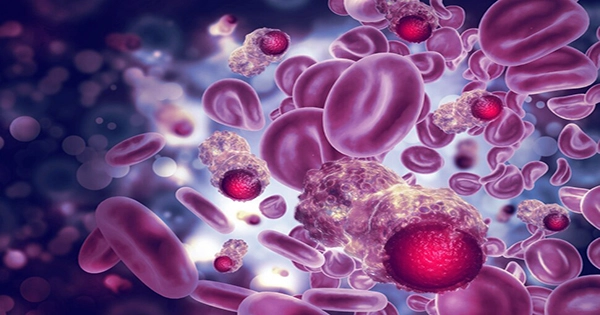Esther Shaw, 43, underwent surgery to have a tumor from her left breast removed in September 2020. After completing six months of therapy for triple-negative breast cancer, the mother of two from London underwent a therapeutic mammoplasty. Since then, she has completely changed her lifestyle and started an intense workout program.
“I carried on running all the way through my chemo treatment,” she says. “Since recovering from my operation, I’ve turned to weight-lifting in a big way and also play netball outdoors once a week. I have a personal trainer, Jordan Holtom, who puts me through my paces with three hour-long sessions a week including lots of squats and deadlifts, and I balance that between running and playing netball outdoors once a week.”
Even though Esther no longer has cancer, she claims that just hearing the word “metastasis”—which refers to cancer cells spreading outside of the original tumor—is enough to make her break out in a cold sweat.
However, a new study from Tel Aviv University with 3,000 participants that was released in the November issue of the journal Cancer Research gave her hope. High-intensity aerobic exercise, compared to those who did not exercise, was found to reduce the incidence of metastatic cancer by 72%.
The study’s findings apply to everyone, not just those who are fighting cancer. Simply put, the researchers found that high-intensity exercise has a protective impact, causing muscles and organs to burn glucose more efficiently and causing cancer cells to lose the war for sugar.
According to the Daily Telegraph, study author Professor Carmit Levy said, “We questioned why cancer is not metastasizing to the muscle: something about muscle cells is protecting them. Therefore, we exercised mice and especially examined the lymph nodes, lung, and liver—organs that typically host metastases. After eight weeks of aerobic exercise, we found that those organs had also undergone modifications and had altered their metabolic characteristics, in addition to the muscle’s ability to grow stronger. They had developed into super organs that were considerably better at absorbing glucose.
The study team next examined epidemiological information from 3,000 participants who had been tracking their physical activity for 20 years. They discovered that in 72% [of cases], exercise had a preventive impact against metastatic cancer. They came to the conclusion that sustained exercise causes the body to change.
The explanation behind this, according to Professor Levy, is that “cancer cells are addicted to glucose. However, when you add cancer to an environment where tissue has been educated to activate glucose at such a high level, cancer loses.
What does that entail for our training plans, then? According to her co-researcher, Dr. Yftach Gepner, “Our data show that high-intensity aerobic activity, rather than relatively moderate fat-burning exercise, aids in cancer prevention. Even for brief periods, 80–85% of one’s maximum heart rate is needed for sugar burning. Our findings imply that healthy people should also incorporate high-intensity workouts into their fitness regimens.
Dr. Gepner suggests 75 minutes of exercise per week, broken up into three 25-minute sessions, with a ten-minute warm-up and then regular intervals of two minutes of walking and two minutes of jogging. A decent rule of thumb is that high intensity implies you can’t converse while performing it, therefore you don’t need a heart rate monitor.
















